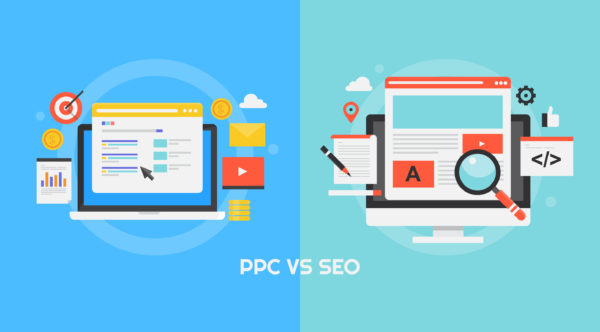Law Firm Content Marketing: Content Distribution Strategies
After the content development phase, the next step in content marketing is to strategize where your law firm content is distributed. Effective distribution occurs across many platforms and channels and in ways your audience will be reached, engaged, and/or influenced.
Since identifying and understanding your audience and goal setting occurs before the distribution phase, your law firm should be positioned to reach those that matter effectively. But it still takes planning and strategizing what’s published, and there are clear steps to take to increase your chance of success.

Table of Contents
 Where, when, and how content is shared determines its performance and contribution to your law firm’s content marketing strategy. Social media platforms, newsletters, websites, blogs, and other channels should complement each other and work together to have the greatest impact. If you don’t properly distribute what you create, it won’t matter how good the content is – it won’t reach its full potential, and part of your efforts will be wasted.
Where, when, and how content is shared determines its performance and contribution to your law firm’s content marketing strategy. Social media platforms, newsletters, websites, blogs, and other channels should complement each other and work together to have the greatest impact. If you don’t properly distribute what you create, it won’t matter how good the content is – it won’t reach its full potential, and part of your efforts will be wasted.
There are several factors to consider when it comes to content marketing and distribution. Understanding that quality is better than quantity and how content should be written depending on the channel it’s shared through is important.
Your law firm should know what’s valuable, such as evergreen content and social media posts, where to publish, and how to refresh and repurpose content. Using strategies like content curation and aggregation and tools to monitor social media efforts are all key components of the distribution process. In addition, your law firm’s content should consider marketing trends and current events that provide opportunities to leverage messages to better reach, engage, and influence your target audience.
Content distribution includes:
- Paid and Organic Social Media Strategies
- Repurposing and Refreshing Content
- Content Curation, Aggregation and Publication
- Social Media Monitoring Tools
While it can seem overwhelming, a solid content marketing plan will guide this process and set your law firm up for success. These distribution tasks have specific benefits and purposes, and strategically align with goals. Not sure where to start? Here we review each aspect of content distribution step-by-step.
Paid and Organic Social Media Strategies
Since its inception, social media has had an integral role in how we communicate with others, both personally and professionally. Due to the popularity of social media platforms like Twitter, Facebook, LinkedIn, Instagram, Snap Chat, and Tik Tok, it’s vital for businesses to be present on the main channel(s) their audience uses and leverage it to help meet their goals. As a law firm, knowing where your target audience is, from clients and potential clients to legal organizations, is a core strategy.
However, it’s a common mistake for businesses to use too many social media platforms for the number of resources available to them. This often has a negative impact on what they’re trying to achieve. To ensure a solid social media presence, focus on quality over quantity. It’s easy to be spread too thin, so identifying the best social media platforms for your law firm is crucial.
An effective social media marketing plan combines both paid and organic strategies. It’s necessary to boost and support your efforts with paid posts and ads because organic results – showing up in a follower’s timeline – have decreased over time. Unfortunately, only a small portion of your followers will see your posts on any given day, so complementing it with paid social media is necessary to achieve your goals.
Customize Content for the Social Media Platform
No doubt you’ve seen the option to post from Instagram to Facebook, and you’ve probably done this at least on your personal profiles. While it’s tempting to use these features or simply copy and paste the same content to all of your accounts, language and presentation should be customized for every social media channel your law firm uses. Understanding the appeal and purpose of each channel should direct the language, tone, and format of your posts.
For example, Instagram’s appeal is photo-sharing. If you were to share a webpage or blog article within the text of your IG post, it wouldn’t become a clickable link as it does on Facebook, LinkedIn, and Twitter. Because of this, the content shared on Instagram should be different and focus on visual impact. For example, since legislation and legal topics can be dull or confusing for the average person, graphics that share important statistics or facts updates would be appropriate.
Organic Social Media Strategies
When creating non-paid social media content, your goal is to build a relatable and approachable voice and authority in your areas of expertise. What you post on channels meant to reach clients, potential clients, and returning clients must be easy to understand, which means it’s in simple language and tailored to how they absorb information. Limit legal jargon, explain complicated legislation and relevant information in simple terms and have clear calls-to-action when appropriate. For others who work in the legal field, it’s fine to use legal terminology and speak in a professional style.
Organic social media content should also be shareable and encourage interaction. The higher your social media engagement, the greater your business exposure and opportunity to gain a larger following will be. After all, if someone shares or comments on a post, some of the people they’re connected with on the platform (friends, followers, etc.) will see it. This organic reach can deliver great results.
Standing out in today’s online world is difficult. You’re constantly competing for attention from people who are easily distracted and spend little time on individual posts, so delivering original content is key. How often you post depends on the channel, and recommendations range from daily (LinkedIn) to two to five times per week (Facebook).
Paid Social Media Strategies
Law firm social media strategies should include paid posts and ads. When done right, paid tactics will strengthen your overall presence and reach. With fewer followers seeing posts organically, lead generation efforts should be supplemented with paid social media strategies.
The options for paid posts and ads depend on the platform. There are benefits to boosting posts and creating ads, and a combination is best.
Your law firm should set a social media budget and narrow down the audience you want to target. Defining your audience will increase your impact. Testing what works and what doesn’t is another strategy, and many of the most popular social media platforms offer A/B testing, also known as split testing. It allows you to try different headlines, images, and even content in your ads to see what delivers the best results.
Repurposing and Refreshing Content
Competition is fierce in the legal industry. It demands your law firm website, blog, and other communication channels to stay relevant and well positioned. When you rank well on search engines for the topics that matter most, it’s easy to forget about the content that got you there and move onto the next task. But it’s equally important to put effort towards maintaining your place and impact.
An effective strategy to stay current and continue to appeal to the audience(s) that matter is through repurposing and refreshing content. Since an effective content marketing plan includes measuring and tracking your efforts, your law firm should know what content is performing well, from its reach and shares to click-through rates and leads. You can then use this information to identify legal content that could benefit from a refresh or repurpose to expand your results. A law firm can do this several ways, but knowing the difference between the two strategies is important.
How to Refresh and Repurpose Content
Refreshing content involves updating or adding to content that already exists. A refresh could be done when there’s new and relevant information to add, current events that impact the message and are important to share, changes that affect the content theme, meet new or changed audience needs or even attract new audiences.
A content refresh should also be considered for high-performing content. If your law firm successfully ranks well on Google for the appropriate search terms and phrases, the content that’s getting you those rankings should be examined and leveraged. The content’s structure, headline, links, and length are all things to consider. Keeping it relevant and up-to-date positions your content for continued success. But repurposing your best content is another option.
Repurposing content involves turning something that exists into something new, like taking a broad topic on your blog or website and developing content around a supporting topic or sub-topic. You’d use some of the original content and theme but add an alternate, targeted angle with different and new information.
A solid strategy for repurposing content is to use a different format and delivery method; videos, webinars, guides, newsletters, blog posts, social media snippets, and webpages are viable options for a law firm.
One of the benefits of both repurposed and refreshed content is that the broad topic, focus area and base information already exists – it just needs to be added to, altered and/or delivered differently, sometimes through other communication channels. And if you’re on top of current events, industry trends, and your audience’s needs, the process of refreshing and repurposing content should be fairly seamless.
Content Curation, Aggregation & Publication
As a law firm, producing legal content of benefit and interest to your audience drives a content marketing plan. Without quality, relevant, and timely content distribution that’s tailored to those who matter, your success will be limited, and opportunities will be lost. But it’s not just about your content.
It’s a mistake to think that other organizations, experts, and influencers don’t create fantastic content. Experienced legal marketers stay up to date on what others in the legal industry are saying and sharing and use it to their advantage.
Leveraging what others produce by adding your firm’s opinion to it or directly sharing content should be part of your law firm content marketing plan. These marketing strategies are referred to as content curation and content aggregation.
What is Content Curation?
Content curation is the process of taking something relevant that someone else created and adding your own voice or opinion to it. New or changed legislation, current events that impact or are related to one of your law firm’s practice areas, anticipating future situations that will impact your audience, and providing an alternative argument are some of the key topic strategies for content curation.
Content curation adds value to the content that others produce, allowing you to connect the information to your specialties and give voice to how it affects the services your law firm provides. A good place to start is news sources and legal organizations that your attorneys stay current with. Trends and current events are opportunities to add your law firm’s opinion because timeliness and relevance are huge factors for search engine rankings.
One of the core benefits of content curation is that the topic is already there. As long as a law firm is paying attention to what’s happening in the industry, they’ll discover high-value and high-performing content topics that are worth talking about. An experienced legal marketing team can ensure this happens.
What is Content Aggregation?
It’s also important to recognize that other businesses, experts, and influencers offer valuable and credible content that your audience could benefit from knowing. Sharing content produced by others is called content aggregation, and it can be hugely effective in supporting and developing your own credibility. Because of this, integrating it into your content marketing plan is a must.
Content aggregation can provide reprieves to the time-consuming process of continually creating and distributing your own content. While it might seem counterintuitive to share and link to another website or blog post, it can be hugely effective in supporting and developing your law firm’s credibility.
However, content aggregation isn’t random and needs to be strategic. Simply retweeting an article without knowing how it fits into your content marketing strategy can not only be wasteful but detrimental to your brand and following. It needs to follow the same path and process your own content does, with a clear purpose and specific business goals in mind.
Beyond the benefits of audience value through sharing and commenting on content created by others with authority, it also builds valuable professional connections. Content curation and aggregation contribute to relationship-building, something that can positively impact your own brand and business.
Both content curation and aggregation should be included in your editorial calendar, and there are many tools that can make finding relevant and shareable information easy, such as Hootsuite. And remember: Whether you’re aggregating or curating content, you must give appropriate credit to the original source. Every. Single. Time.
Social Media Monitoring Tools
 Part of distributing social media content should include ongoing monitoring of how it performs. While one of the final components of a solid content marketing plan involves analyzing key performance indicators (KPIs), reviewing social media analytics should be an ongoing process. When done properly, tracking and understanding the results of posts across the platforms your law firm uses will shape and improve future social media content.
Part of distributing social media content should include ongoing monitoring of how it performs. While one of the final components of a solid content marketing plan involves analyzing key performance indicators (KPIs), reviewing social media analytics should be an ongoing process. When done properly, tracking and understanding the results of posts across the platforms your law firm uses will shape and improve future social media content.
The data provided through social media analytics should also be used when measuring your content’s KPIs; they show how well your posts align with and contribute to your content marketing goals. Examining what each post achieves (or fails to achieve) and how they work together provides a clear picture of your efforts.
What Social Media Monitoring Tools Offer
Social media monitoring tools track post engagement, shares, reach, mentions, keywords, and follower demographics. Hashtags and trending legal topics, and campaign tracking for both paid and organic posts are some of the features of these tools. Email alerts for mentions across platforms can be customized and keep you informed of what people are saying about your firm. Knowing what your law firm should be paying attention to, then taking that information to improve the impact of posts are core components of effective social media monitoring.
In addition to seeing how well your law firm’s social media posts are working, these tools also show how your competitors and industry leaders are doing online. Knowing their rankings, combined with your own firm’s positioning and success, provides invaluable information; patterns emerge, which can lead to a greater understanding of what your common audiences respond to and relate to. Topics, type of content, delivery method, delivery times, and frequency of social media posts that see the greatest success are all key pieces of information that can be leveraged.
At the end of the day, regularly monitoring social media efforts is a crucial strategy in the content distribution phase of your marketing plan. Many easy-to-use tools provide real value for free or an affordable fee. The features they offer vary, from basic analytics to in-depth post analysis.
Using social media monitoring tools throughout your law firm content marketing plan is a worthwhile investment of time and resources. If you aren’t monitoring your law firm’s social media efforts, start now. Check out tools like Hootsuite and Buzzsumo, and at the very least, get Google Alerts set up for the most basic monitoring option.
Continue learning about the core components of the next phase of a content marketing plan: content analysis. The strategies for the analysis phase determine and ensure the content your law firm develops and distributes achieves the best results.


















